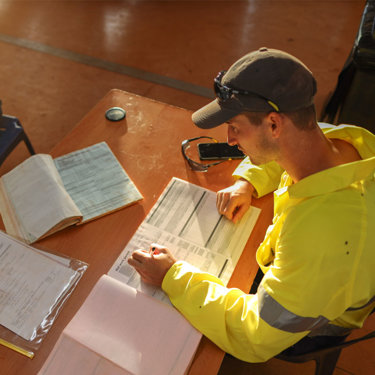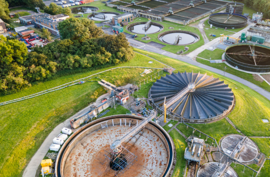
Contaminated land management
We help investors, owners, operators and developers in a wide range of sectors – from chemicals and construction to real estate and utilities.
By combining our technical expertise with a commercially focused approach, we find land quality management solutions to manage and reduce risk, so that you can achieve your business and sustainability goals.
- Access to 120+ experienced consultants
- Innovative solutions to enable development, transactions, and compliant installation
- 40,000+ jobs completed each year across all services
- Award-winning environmental services
How we can help with your land quality management
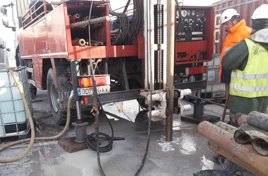
Environmental due diligence
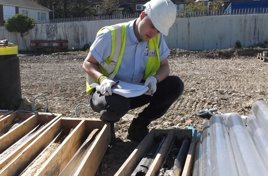
Geoenvironmental
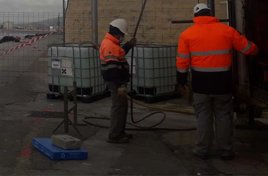
Environmental risk management
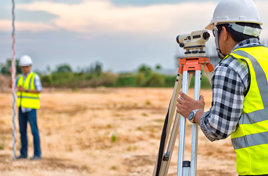
Contaminated land survey
Why choose Adler and Allan for contaminated land management?
Solutions-based
Flexible and commercially focused
Project experience
Individual experience
Trusted partner
Accredited and certified
Award-winning
“The presence of contamination could expose a business to legal and financial liabilities as well as reputational damage. Understanding this is key to ensuring a business meets their ESG and corporate objectives.”
Bryan Cherry, Contaminated Land Consultant
Our land quality management locations
We can offer land contamination management services across the UK and Ireland with a nationwide network of strategically located offices and depots.

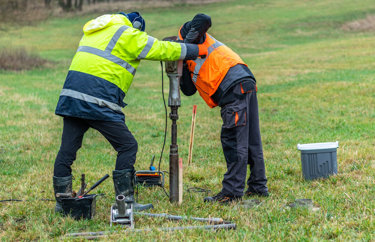
Contact us about contaminated land management today
We can provide end-to-end turnkey solutions that meet the specific needs of your business and your project.
Contaminated land consultancy across diverse sectors
From single commercial, industrial, and residential entities to multi-site portfolios, we have experience in advising on a diverse range of properties and sites.
We work with water, wastewater, gas and electric companies to meet their net-zero demands and ensure their land quality management can cope with the challenges of an ageing network.
We can help facilities management companies protect customers' assets by reducing costs, cutting carbon emissions and remaining compliant within all relevant industry regulations.
We've worked with the Ministry of Defence for more than 20 years, helping our partners in the defence sector tackle key challenges around fuel infrastructure, compliance and energy transition with a view to more sustainable future practices.
In the retail fuel sector we've helped forecourt owners by providing storage solutions as well as land quality management in the form of pollution prevention. We've also assisted midstream and downstream operators in the wholesale fuel sector, and we've supported oil and gas companies dealing with an ageing network in a rapidly changing industry.
Builders, contractors and civil engineering firms in the construction sector have all benefited from our expertise when it comes to installing and maintaining tanks and drainage, implementing waste management solutions and responding to spills that could lead to land contamination.
Processing and storing hazardous materials, spill management and waste removal are just some of the key challenges we can consult on for manufacturing firms.
We work with importers, manufacturers and distributors to ensure production, storage and transportation of chemicals can be achieved without risking land contamination.
Our insurance partners have called on us to support them through the entire claims lifecycle – from the initial response through to investigation and remediation.
What is contaminated land?
'Contaminated land' is a wide-ranging term to describe the impact to soil and water from historical human activity. Land contamination is caused by a variety of practices, including industrial use, disposal of waste materials (licenced and unlicensed) and the importation of material to raise ground levels. In some cases, contamination of soils can occur due to naturally occurring compounds, typically metals.
In some cases – where there is a possibility that harm could be caused to certain water bodies, human health and ecology – land impacted by contamination can be determined as 'contaminated land'. This has a specific legal definition set out in Part IIA of the Environmental Protection Act.
The Environment Agency's land contamination risk management (LCRM) sets out the guiding principles and processes for the assessment and remediation of land contamination. The document is designed to ensure all environmental assessments are undertaken in accordance with government policies and/or legislation within the UK.
What does a land contamination assessment cover?
The environmental assessment is designed to analyse and address risks to:
- Human health
- Property (existing or proposed) including buildings, crops, livestock, pets, woodland and service lines and pipes
- Adjoining land
- Groundwaters and surface waters
- Ecological systems
- Archaeological sites and ancient monuments
Why might you need contaminated land consultancy?
Contaminated land can present numerous commercial, technical and legal challenges. These all generate uncertainty, costs and delays when land is being bought, sold or redeveloped. We know that your first priority is to protect your project's environment. We also appreciate the commercial aspect, and that your business can ill afford the potential financial, legal, and reputational damage that such obstacles can cause.
We strongly believe that the key to managing land contamination – and the successful completion of any development project – comes from straightforward, concise and timely advice which quantifies risks and delivers value.
Land quality management case studies
Emergency spill response to 21,000 litres of leaked fuel
The project: After an attempted theft of 25,000 litres of diesel at a distribution depot, much of the fuel was escaping underground and heading for a watercourse.
Our solution: Containment of the diesel in the first instance, followed by daily monitoring. Removal of the damaged tank and a comprehensive investigation over several weeks to check for any signs of land contamination.
The numbers: Around 130 birds rescued, with no other aquatic life impacted. Zero fines for our client, who only had to close three loading bays on a temporary basis.
Pollution prevention at a water utilities company
The project: An undetected spill of 50,000 litres of diesel after a contractor pierced a fuel line.
Our solution: Urgent clean-up, a comprehensive ground investigation and a long-term strategy. A negative gradient to guide the fuel away from waterways, plus a pump and treat system to separate oil from contaminated water.
The numbers: 30,000 litres of fuel recovered, while our client avoided a potential fine of £8 million due to our fast and effective response.
Talk to us about land quality management today
Keep your business compliant and protect the environment while reducing the risk of operational downtime. Find out how Adler and Allan can support you and your project via our contaminated land management services.
Contact our contaminated land consultants